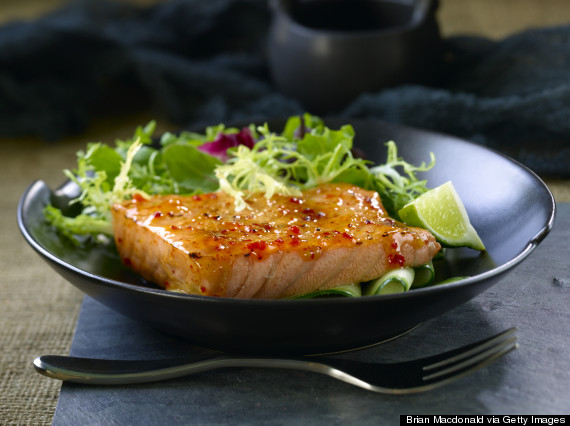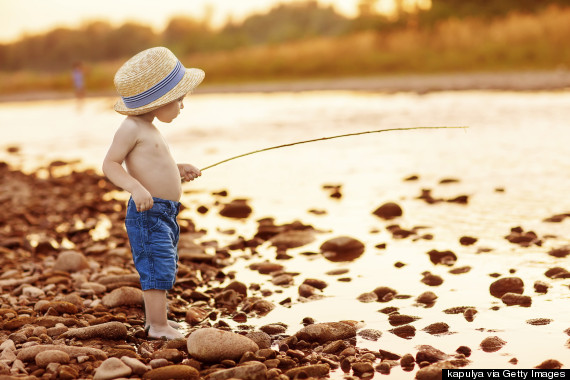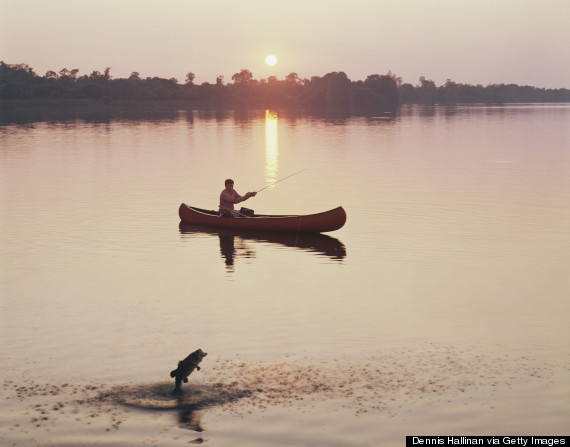 Posted: 09/11/2014 11:21 PM
Posted: 09/11/2014 11:21 PM
Squid fishing boats docked in Eureka for the first time Thursday, unloading 124,000 pounds of squid at the Fisherman’s Terminal.
Commercial squid fishermen from Southern California were drawn to the North Coast by following squid that were driven out of their typical habitat by a rise in ocean water temperatures, said Jeff Huffman, Eureka dock manager with Wild Planet, who helped to facilitate the docking and unloading of the squid boats.
With few squid left in their typical fishing zones this year, Southern California Sea Food, Inc., has been moving up the coast. On Wednesday, two boats fished in the area between the mouth of the Mad River and the False Cape, south of the Eel River, bringing the first boat into the dock at 2 a.m. Thursday and the second at 7:30 a.m., Huffman said.
“The squid fishery has always been a Southern California fishery, but because of the warm water down south the squid are all up here,” he said. “There have always been some squid here, but not in these numbers.”
Unusual patterns in the Pacific Ocean have shifted water temperatures, creating unusually warm water both to the north and south of California’s North Coast, said Eric Bjorkstedt, research fishery biologist with NOAA’s Southwest Fisheries Science Center and an adjunct professor in Humboldt State University’s fisheries biology department.
The temperatures have not grown warmer off the Northern California coast, which appears on National Oceanic and Atmospheric Administration maps that track water temperatures as one of the only places along the West Coast that does not appear dark red — the color that indicates warming waters.
While this is not a typical El Nino year, Bjorkstedt said some patterns are consistent with the weather phenomena’s conditions.
“Normally in an El Nino, market squid do very badly — usually the catches go nearly to zero,” he said. “The reproductive success is not high, and the squid industry basically crashes for that year.”
Squid populations could be shifting north because of a change in water temperatures or shifting closer to shore because they are following a shift in nutrients and food supply, said Jeffrey Abell, chairman of HSU’s oceanography department.
Shifts in weather patterns and climate causes water temperatures and ocean nutrients patterns to change, he said.
“It manifests the shifts in ocean circulation, which alters the input of nutrients into the ecosystem, and then the organism responds to that and moves into a range where it is not usually found,” Abell said.
Either way, there is an unprecedented number of squid off the North Coast, Huffman said.
Southern California Sea Food, Inc., hopes to bring in 300 tons of squid every 24 hours, and the squid is then transported in trucks to Monterey, where it is processed at a company plant, he said.
Huffman added the company is limited by the number of squid that they can process, unload and truck, but not by the amount of squid in the bay.
“I think they can definitely catch more than we can actually get through the place and shipped out,” he said.
By Sunday the company will have five boats in the area, and they are hoping to continuing fishing here for two to three weeks, Huffman said.
Having the fishermen in town will be a boost for the local economy, he said, as the crew of more than a dozen people stays in local hotels, eats, shops, buys fuel and pays for moorings at the marina.
“This is a great plus to the whole waterfront and the town,” Huffman said.
The goal of the Fisherman’s Terminal was to bring in this type of business, he said. The dock is typically used for processing crab, salmon and some other fish, but being able to unload squid there adds another avenue for profit.
“It is a unique opportunity for the city to use its loading dock. Normally this isn’t something that we get to do,” said Eureka Councilwoman Marian Brady.
“It is all money that is coming back into our economy,” she said. “We definitely need industry, and this is a form of commerce that uses our bay for its purpose. We built all this infrastructure, and it hasn’t been used optimally.”
The city is working on plans to get a cold storage facility in town to keep even more of the business local, she said. All the squid is currently being taken out of town to be processed.
“But these three to five ships that are in here, that is adding a spurt to our economy,” she said.
This is a positive development for the economy and the city, said Ken Bates of the Humboldt Fishermen’s Marketing Association.
“This activity at Fisherman’s Terminal is exactly the kind of thing we were hoping to see in Eureka when this facility was built,” he said. “It’s exciting.”

Read original post here.
















